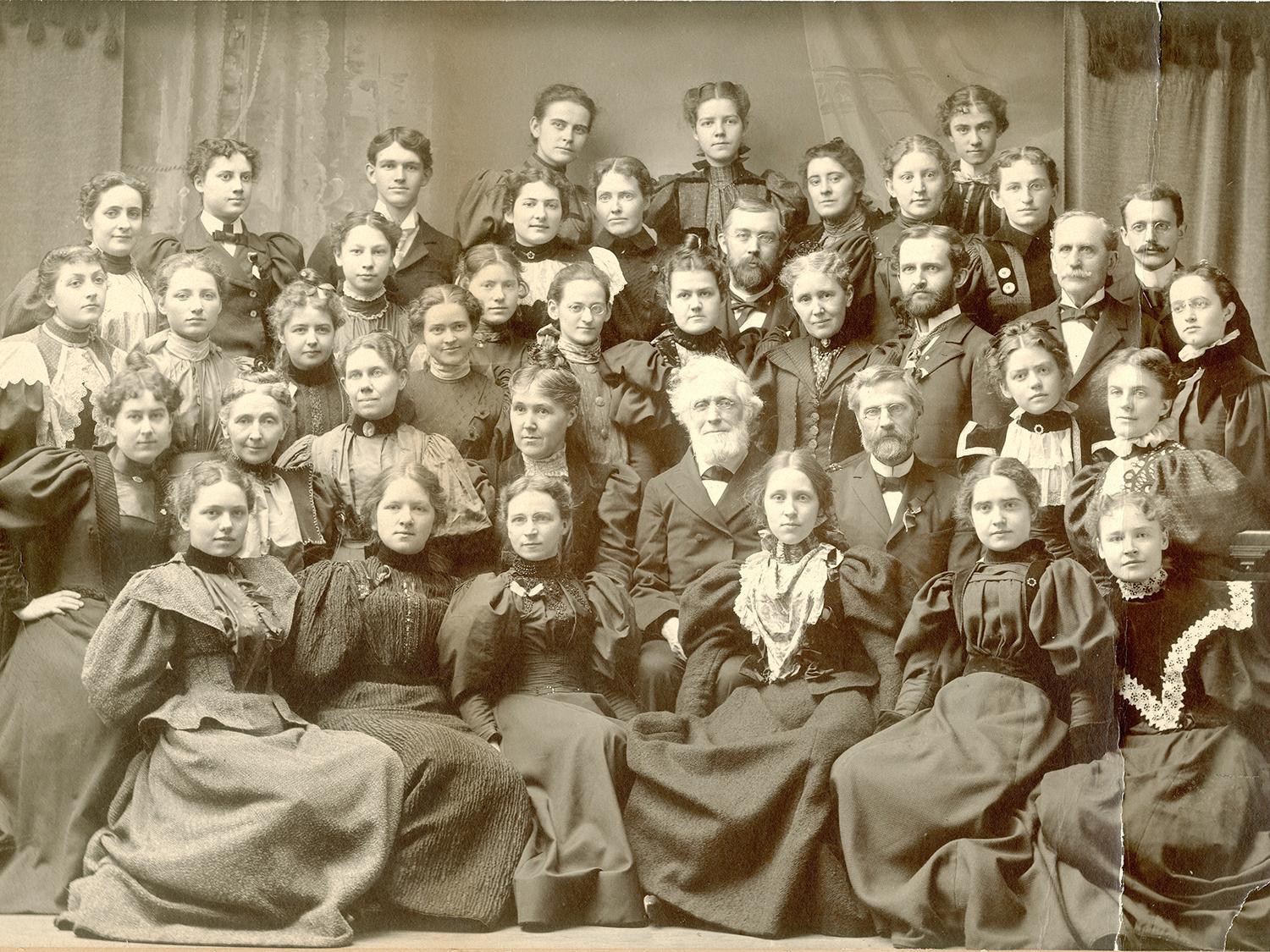Edward Austin Sheldon (with white beard in middle) is pictured surrounded by teachers and students in this 1890s photo.
Happy birthday to our founder, Edward Austin Sheldon, born Oct. 4, 1823 (196 years ago!). In celebration, here are five things about him you might not have known.
1. Edward Austin Sheldon hated high school. But who could blame him when the rote memorization used in education at the time was so uninspiring? Yet this inspired him, later in life, to look for new educational tactics -- eventually the Pestalozzi learner-centered method, which Sheldon adopted and molded into what became the world-renowned Oswego Method of active learning used by teachers in training leading classes in primary schools.
2. Sheldon struggled in college. Going to Hamilton College was very different from life on the farm, and at first he wasn’t sure if he fit in. He worked hard and did well academically, but had to pause his studies due to illness.
3. Sheldon came to Oswego in 1847 to help run a nursery. Sheldon was learning about botany on a farm in Newburgh when he met a gentleman named JWP Allen. Allen was looking for investors for a nursery in the city of Oswego, then booming due to international trade coming through its port. The business didn’t pan out, but Sheldon was moved by the city and its people. When he discovered how many children in the city were poor and couldn’t read, his passion led him to start a local school -- which (after some plot twists) ultimately drove his desire to find better methods of education (and founding the Oswego Primary Teachers Training School in 1861, which evolved into today’s SUNY Oswego).
4. Sheldon bought the property at Shady Shore in 1856 and built the house that became home to SUNY Oswego’s presidents, including current President Deborah F. Stanley. His interest in the variety of trees and flowers drew him to the lakeside parcel. It ultimately decided the college’s current location: When Isaac Poucher, head of what was then known as the Oswego Normal School, was looking for a place to put a new, state-of-the-art education building (now known as Sheldon Hall, which opened in 1913), administrators purchased the founder’s old property and the adjacent acreage.
5. Sheldon spearheaded discussions of the present and future of education at the 1893 Chicago World’s Fair and Columbian Exposition. Among the most famous world’s fairs for its ushering in of the modern age (and introduction of the first Ferris wheel), its showcases included the World’s Educational Congress, where Sheldon served as president of the professional training of teachers department. At that fair, Oswego earned a medal of honor celebrating its "excellence of equipment, method, and wide usefulness throughout its long history under one principal" as well as "excellence of educational methods and literature, as evidenced by their use in the United States."




